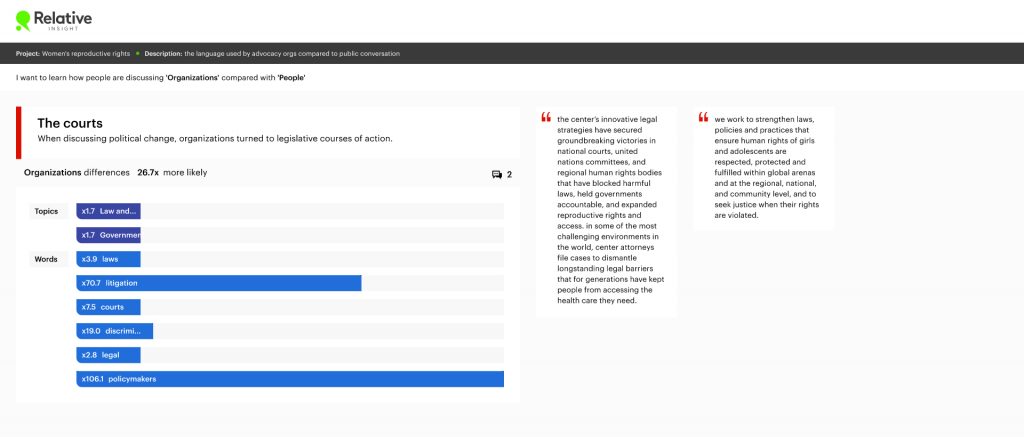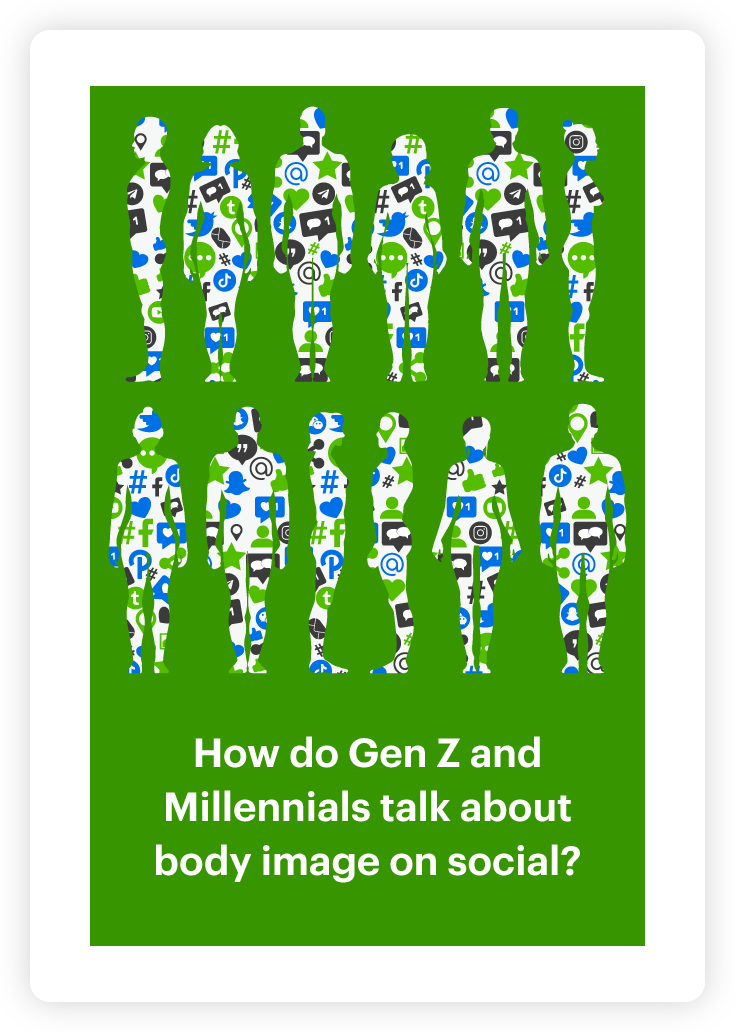Using the language of reproductive rights of women to unite advocates

The reproductive rights of women are a hot button topic in the US. It’s obvious pro-choice and anti-abortion groups have drastically different opinions but do advocacy organizations and the average supporter vocalize the same message?
Brands, agencies and charitable organizations are using Relative Insight to distill social insights and align brand messaging with the words used by their target audiences.
Using Relative Insight’s text analysis platform, we analyzed tweets around the reproductive rights of women and compared them again messaging used by organizations like Planned Parenthood, Center for Reproductive Rights, NARAL Pro-Choice America and the National Women’s Health Network. Knowing that consistent and uniform messaging can unite different groups supporting the same cause, this analysis will show us where advocacy organizations can unite with supporters, educate the public and close any gaps in communication.
Here’s what we found…
The Public
The recent Texas anti-abortion law was a huge component of the reproductive rights of women conversation over the past few months. Pro-choice advocates called the decision stupid, dumb, hypocritical, idiotic and ignorant. Organizations were more likely to release formal statements responding to or denouncing the recent law.
Many Twitter users addressed the role of men in limiting reproductive rights of women. They were more likely to use words like he, him, men and man. Some speculated that men would not oppose abortion if they themselves needed it.

The public was split into two camps: supporters and opponents. While most of the insights came from pro-choice supporters, our analysis discovered a definite group of anti-abortion protestors. We identified this segment of Twitter users through the use of words like murder, killing, god and life. Often these tweets were in direct response to users with pro-choice opinions, which we observed through the use of @.
Both
Both advocacy organizations and the public discussed the role of government and politics in the country’s current state of reproductive legislation. The difference in how these two groups discuss the topic lies in their chosen course of action. Twitter users encouraged politicians and the greater public to vote for change, while advocacy organizations turned to litigation.


Organizations
Advocacy organizations focused on education, which we observed through words like learn, information and expertise. By offering educational resources, these groups position themselves as authoritative and reliable entities. Furthermore, by using the words like advocacy, protect and fighting these organizations are able to demonstrate their impact and commitment to the cause.

The issues addressed by these organizations were regularly positioned as being extremely important. Mission messaging stressed the urgency of the cause through adjectives like essential, fundamental, crucial and critical. This word choice not only relays the importance of the reproductive rights of women to readers but it also demonstrates the dedication of these groups.
As respected organizations, we can’t expect messaging to exactly mirror that of the public – stupid and dumb probably don’t belong in a press release. However, by analyzing tweets and comparing them against advocacy campaign messaging we can confirm that pro-choice individuals and organizations share a lot of common ground when it comes to ensuring reproductive rights of women.
The next step is uniting both groups to pursue the same course of action, and educating the public about meaningful and effective forms of change.
